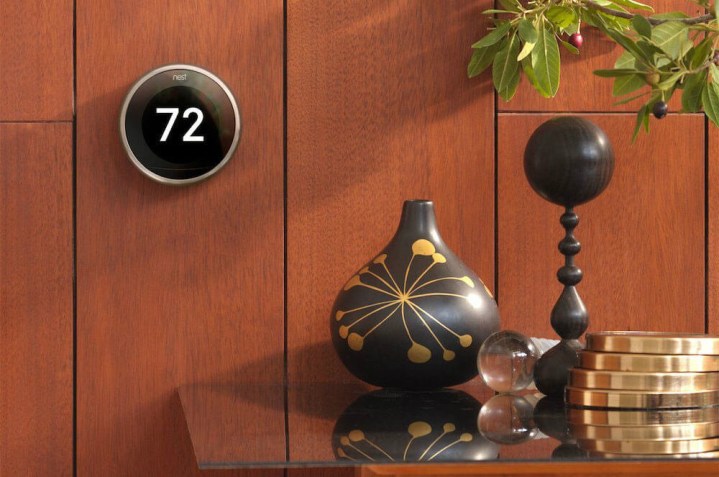Using a smart thermostat is a great step toward saving money on your heating and cooling bills. They can learn your heating preferences and prevent overheating or cooling your home to save big on energy costs. There are some ways to make your thermostat even more efficient, though. Here’s how to get the most savings out of your programmable thermostat.
Further reading
- What is a smart thermostat and how does it work?
- The best smart thermostats you can buy
- How a smart thermostat can protect your home from brownouts

Let your thermostat do the work
Quit fiddling with your thermostat. It’s called a smart thermostat for a reason. It knows what you need, and turning your heat on and off manually can cost you more money than leaving things alone. By letting your programmable thermostat do its thing, you can save up to 35% each month, according to Lennox.
Give your thermostat a new home
You may want to think about moving your thermostat. It can’t heat or cool a room properly if it’s getting confusing information from its environment, so proper placement is everything. For example, if your thermostat is next to an entryway, every time the door opens it will get a cold blast of air in the winter. Thinking the temperature dropped in your home, it will switch on the heat, even if your home is perfectly cozy, wasting money.

To save the most money, it’s best to have your thermostat away from doors and windows. Also, be sure it’s close to where your family spends most of their time. You want the family room to be just the right temperature, not the hallway. If you can’t move your thermostat, upgrade to one that has room sensors (like the Ecobee 4) that you can place around your home for more accurate temperature readings.
Customize each room
For even better accuracy, consider the places you frequent most during the winter months and divide your home into separate areas with an HVAC zoning system. This will give you room-to-room temperature control, so you only heat the rooms you’re using, instead of the whole house. Then, you can program each room’s smart thermostat to kick on and pre-heat a room right before it’s in use. For example, you can set your dining room’s thermostat to warm just before a big meal.
Take advantage of sleep time
Research shows that cooler temperatures help you sleep better. Take advantage of this information to save some money! According to the U.S. Department of Energy, setting your thermostat 10 to 15 degrees lower than normal for eight hours at night can save you around 10% a year on your heating and cooling bills. Just go into your smart thermostat’s app and lower the heating temperatures for the hours you sleep.
Heat pump precision
Most people don’t know that if you have a heat pump, you need a smart thermostat that is compatible with heat pumps. A heat pump is a system that works as both an air conditioner and a heater using a mechanical-compression cycle refrigeration system. They are designed for homes that are in temperate climates that don’t have harsh winters. This is quite different from how a furnace works. They burn some type of fuel, like natural gas or oil, and are typically used in colder climates. If your thermostat was made to work with a furnace system and not a heat pump, you’re probably not getting the best heating efficiency. Here’s how to test your thermostat.
If the thermostat isn’t compatible with heat pumps, it may be time for an upgrade. Here are some good choices:
- The Honeywell TH9320WF5003 WiFi is compatible with Alexa, Apple HomeKit, and Google Assistant and has a touchscreen
- The Nest 3rd Generation Smart Thermostat is compatible with Alexa and is super easy to install.
- The Ecobee 4 is affordable and can be paired with room sensors that can detect if people are in a room and adjust the room’s temperature automatically.



